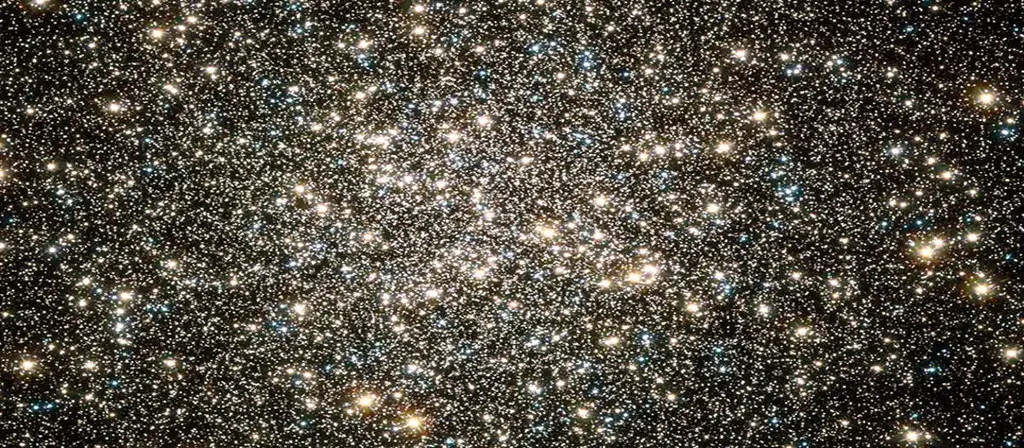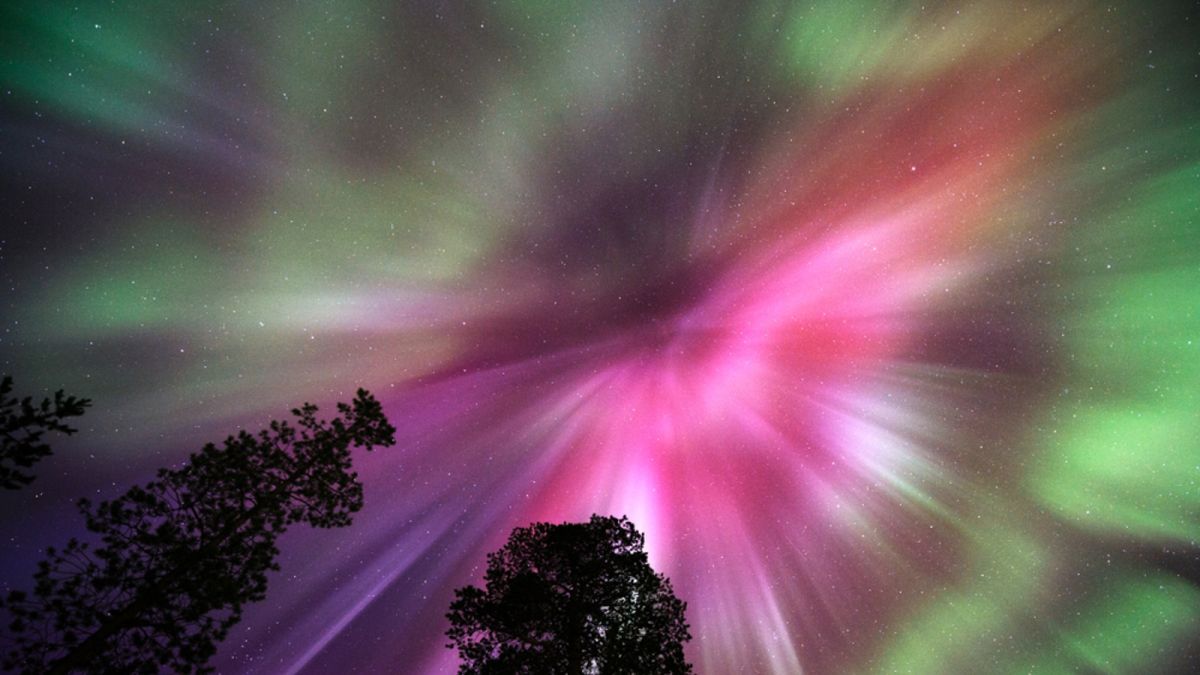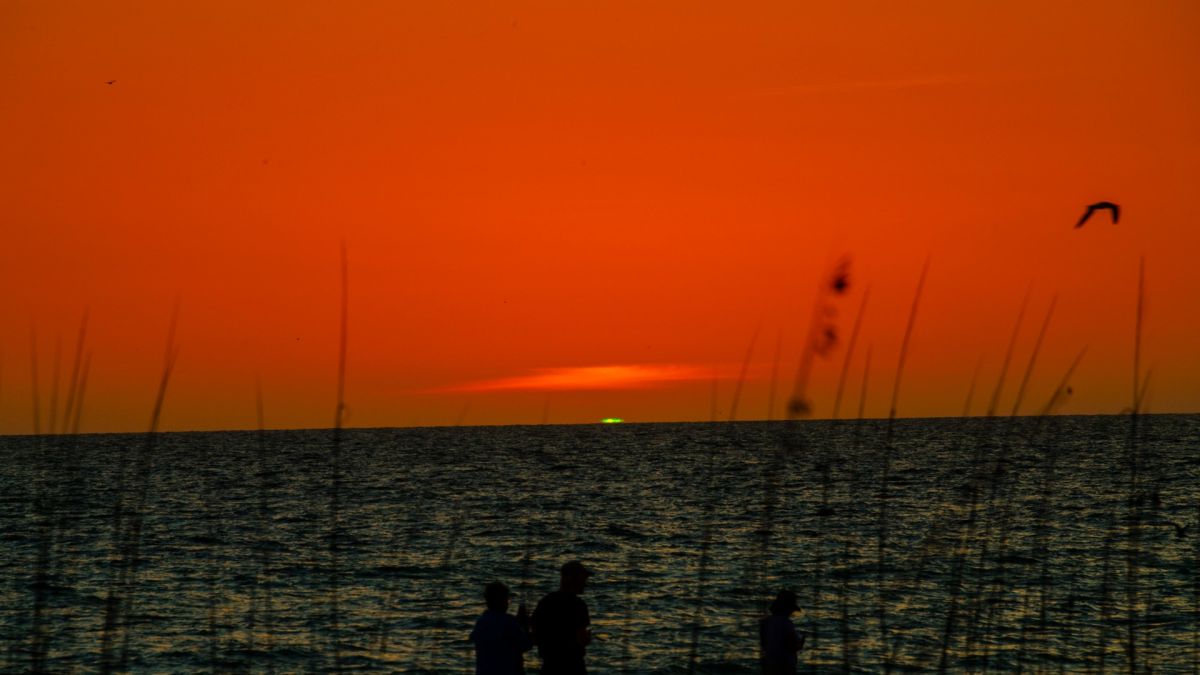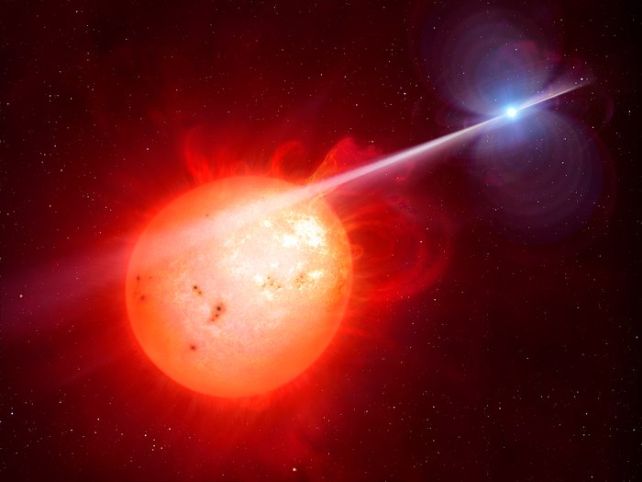Unraveling the Mysteries of the Universe: Celestial Monsters and the Origins of Globular Clusters


Scientists have found strong evidence that supermassive stars were present within globular clusters when they formed 13 billion years ago. Here’s an image of M13, a globular cluster 22,000 light-years away from Earth. A million stars are squeezed into 150 light-years of space. Credit: HST STScI NASA ESA
Researchers from the Universities of Geneva, Paris and Barcelona have found strong evidence that the singularities seen in large clusters can be explained by supermassive stars.
Globular clusters are the most massive and oldest star groups in the universe, housing up to a million individual stars. Born at the same time, these stars have distinct chemical compositions that display anomalies not seen in any other star group.
Understanding this unique property is a major puzzle in the field of astronomy. Researchers from the Universities of Geneva and Barcelona, who previously speculated that supermassive stars might be the cause, along with the Paris Astrophysical Institute (part of CNRS and Sorbonne University) believe they have found early chemical evidence of these stars in globular protostars. . This primordial cluster came into existence after about 440 million years.[{” attribute=””>Big Bang.
These results, obtained thanks to observations by the James-Webb space telescope, were published in the journal Astronomy and Astrophysics.
Globular clusters are very dense groupings of stars distributed in a sphere, with a radius varying from a dozen to a hundred light years. They can contain up to 1 million stars and are found in all types of galaxies. Ours is home to about 180 of them. One of their great mysteries is the composition of their stars: why is it so varied? For instance, the proportion of oxygen, nitrogen, sodium, and aluminum varies from one star to another. However, they were all born at the same time, within the same cloud of gas. Astrophysicists speak of ‘‘abundance anomalies’.’
Monsters with very short lives
A team from the universities of Geneva (UNIGE) and Barcelona, and the Institut d’Astrophysique de Paris (CNRS and Sorbonne University) has made a new advance in the explanation of this phenomenon. In 2018, it had developed a theoretical model according to which supermassive stars would have «polluted» the original gas cloud during the formation of these clusters, enriching their stars with chemical elements in a heterogeneous manner.
‘‘Today, thanks to the data collected by the James-Webb Space Telescope, we believe we have found a first clue of the presence of these extraordinary stars,’’ explains Corinne Charbonnel, a full professor in the Department of Astronomy at the UNIGE Faculty of Science, and first author of the study.
These celestial monsters are 5 000 to 10 000 times more massive and five times hotter at their center (75 million °C) than the Sun. But proving their existence is complex.
‘‘Globular clusters are between 10 and 13 billion years old, whereas the maximum lifespan of superstars is two million years. They, therefore, disappeared very early from the clusters that are currently observable. Only indirect traces remain,’’ explains Mark Gieles, ICREA professor at the University of Barcelona and co-author of the study.
Revealed by light
Thanks to the very powerful infrared vision of the James-Webb telescope, the co-authors were able to support their hypothesis. The satellite captured the light emitted by one of the most distant and youngest galaxies known to date in our Universe. Located at about 13.3 billion light-years, GN-z11 is only a few tens of millions of years old. In astronomy, the analysis of the light spectrum of cosmic objects is a key element in determining their characteristics. Here, the light emitted by this galaxy has provided two valuable pieces of information.
‘‘It has been established that it contains very high proportions of nitrogen and a very high density of stars,’’ says Daniel Schaerer, associate professor in the Department of Astronomy at the UNIGE Faculty of Science, and co-author of the study.
This suggests that several globular clusters are forming in this galaxy and that they still harbor an active supermassive star. ‘‘The strong presence of nitrogen can only be explained by the combustion of hydrogen at extremely high temperatures, which only the core of supermassive stars can reach, as shown by the models of Laura Ramirez-Galeano, a Master’s student in our team,’’ explains Corinne Charbonnel.
These new results strengthen the international team’s model. This model is the only one currently capable of explaining the abundance anomalies in globular clusters. The next step for the scientists will be to test the validity of this model on other globular clusters forming in distant galaxies, using the James-Webb data.
Reference: “N-enhancement in GN-z11: First evidence for supermassive stars nucleosynthesis in proto-globular clusters-like conditions at high redshift?” by C. Charbonnel, D. Schaerer, N. Prantzos, L. Ramírez-Galeano, T. Fragos, A. Kuruvanthodi, R. Marques-Chaves and M. Gieles, 5 May 2023, Astronomy & Astrophysics.
DOI: 10.1051/0004-6361/202346410
#Unraveling #Mysteries #Universe #Celestial #Monsters #Origins #Globular #Clusters





